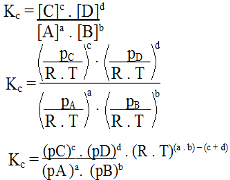O Human Development Index (HDI) is data used by the United Nations (UN) to analyze the quality of life of a given population. The criteria used to calculate the HDI are:
- degree of education: average years of study of the adult population and school life expectancy, or time a child will be enrolled;
- Income: Gross National Income (GNI) per capita, based on the purchasing power parity of the inhabitants. This item was based on GDP (Gross Domestic Product) per capita, however, as of 2010, it was replaced by Gross National Income (RNB) per capita, which evaluates practically the same aspects as the GDP, however, the RNB also considers the financial resources from the outdoors;
- health level: is based on the population's life expectancy, reflects the health conditions and environmental sanitation services.
The Human Development Index ranges from 0 to 1, the closer it gets to 1, the higher the HDI of a location.
According to data released in November 2010 by the UN, Brazil has an HDI of 0.699, a value considered high, and currently occupies the 73rd place in the world ranking. Each year the country has managed to raise its HDI, factors such as increased life expectancy of the population and literacy rate are directly associated with this progress.
However, there are large social and economic disparities in Brazil. The socioeconomic differences between Brazilian states are so great that the country has realities distinct in its territory, which makes it ironic to classify the country with a high Development Index Human.
Note: In November 2010, the UN, based on the new calculation criteria, released a list of countries' HDIs. However, this new method has not yet been applied to the calculation of Brazilian states. Now see the data released in 2008 by UNDP:
1st - Federal District - 0.874
2nd - Santa Catarina - 0.840
3rd - São Paulo - 0.833
4th - Rio de Janeiro - 0.832
5th - Rio Grande do Sul - 0.832
6th - Paraná - 0.820
7th - Espírito Santo - 0.802
8th - Mato Grosso do Sul - 0.802
9th - Goiás - 0.800
10th - Minas Gerais - 0.800
11th - Mato Grosso - 0.796
12th - Amapá - 0.780
13th - Amazon - 0.780
14th - Rondônia - 0.756
15th - Tocantins - 0.756
16th - Pará - 0.755
17th - Acre - 0.751
18th - Roraima - 0.750
19th - Bahia - 0.742
20th - Sergipe - 0.742
21st - Rio Grande do Norte - 0.738
22nd - Ceará - 0.723
23rd - Pernambuco - 0.718
24th - Paraíba - 0.718
25th - Piauí - 0.703
26th - Maranhão - 0.683
27th - Alagoas - 0.677
Analyzing the ranking, the socioeconomic differences in the country are evident, with the South and Southeast have the best Human Development Indexes, while the Northeast has the worst positions. In this sense, it is necessary to carry out public policies to minimize the social differences existing in the Brazilian nation.
By Wagner de Cerqueira and Francisco
Graduated in Geography
Brazil School Team
Source: Brazil School - https://brasilescola.uol.com.br/brasil/o-idh-no-brasil.htm


